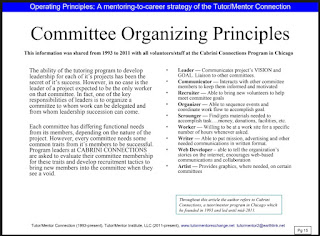Another graphic that I've used since the late 2000s is one showing two teams on a football field, along with fans, owners and media in the stands surrounding the field. This graphic aims to motivate sports supporters to become youth development supporters, too. See it in this article.
My Cause My Cleats - this is an official NFL event and the website shows what causes players from each team are supporting - https://www.nfl.com/causes/my-cause-my-cleats/2024/
My Cause. My Cleats - Philadelphia Eagles - https://www.nfl.com/causes/my-cause-my-cleats/2024/eagles They have this for every NFL team.
NFL charities Inspire Change campaign - https://www.nfl.com/causes/inspire-change/ This site shows Education, Economic Advancement, Police-Community Relations, and Criminal Justice Reform as the issues they support.
Athletes for a Causes - https://auprosports.com/athlete-causes/ This site has a list of causes, with a drop-down menu showing athletes who support each cause.
MLB Together - https://www.mlb.com/mlb-together
MLB Charities - https://mlbcharities.auctions.mlb.com/
MLB Players Trust Charity Auctions - https://mlbcharities.auctions.mlb.com/ The left side of this site lists teams and shows player involvement.
MLB Players Trust - supports player initiatives - https://www.trust.mlbplayers.com/
Baseball charities - https://probaseballinsider.com/baseball-charities/ This site has list of player foundations and shows geographic area of focus for each.
Big League Impact - https://bigleagueimpact.org/players/ This site features a few players and has a lists of players involved in past years. On this page causes are shown, with a list of charities that benefitted.
MLB Together - list of causes https://auprosports.com/athlete-causes/ There is a list of teams/causes on this site
Causes players support - https://nielsensports.com/sports-fans-are-looking-to-sports-leagues-and-athletes-to-support-social-causes/
Exploring charitable work of MLB players - https://sportstars.blog/real-mvps-exploring-charitable-work-of-mlb-players/
Sports media - https://www.sportpositive.org/reports/
I posted this list on this page in the Tutor/Mentor library.
It's not the Tutor/Mentor Institute, LLC's intention to be the most comprehensive resource for athletes and celebrities supporting causes. Instead, I seek to point to websites that are aggregating and/or mapping this type of information. If you feel your site should be on this list please introduce yourself to Dan Bassill on LinkedIn, BlueSky, Twitter and/or Facebook. I'd be happy to add your link to this list and feature it in future blog articles.
The links I've aggregated show that many athletes are doing important work. However, I only found one site (Inspire Change) with any type of map showing all the places athletes support, or of the causes athletes support in specific places.
View this visual essay to see the layers of information that were built into the program locator (which is now only available as an archive). Imagine being able to create a map showing athletes and/or foundations that supported youth programs in specific places. If someone were aggregating and sharing the data, that might be possible.
There are hundreds of articles on this blog with similar graphics, posted for the same purpose.
When I post a story, a few people might see it, and maybe one or two will share it. If the same story is posted by a professional athlete, thousands will see it, many will share it, and some will get involved in solutions. What if every college and professional athlete were the "you" in this graphic?
In the late 2000s we had several professional football players involved with the tutor/mentor program I was leading. They came to the program site and talked to the kids and were speakers at conferences I organized. That was good for our program, and the people who met them at our conferences, but did little to support other programs in Chicago.
So I created a visual essay showing a goal of athletes supporting entire neighborhoods of programs, while they also support favored single programs.
Combine these two ideas and grow them over a 10 to 20 year period and see how much impact that has on reducing violence while providing opportunities.
Finally, if these ideas appeal to you, consider making a contribution to help me keep doing this work. click here.






















































